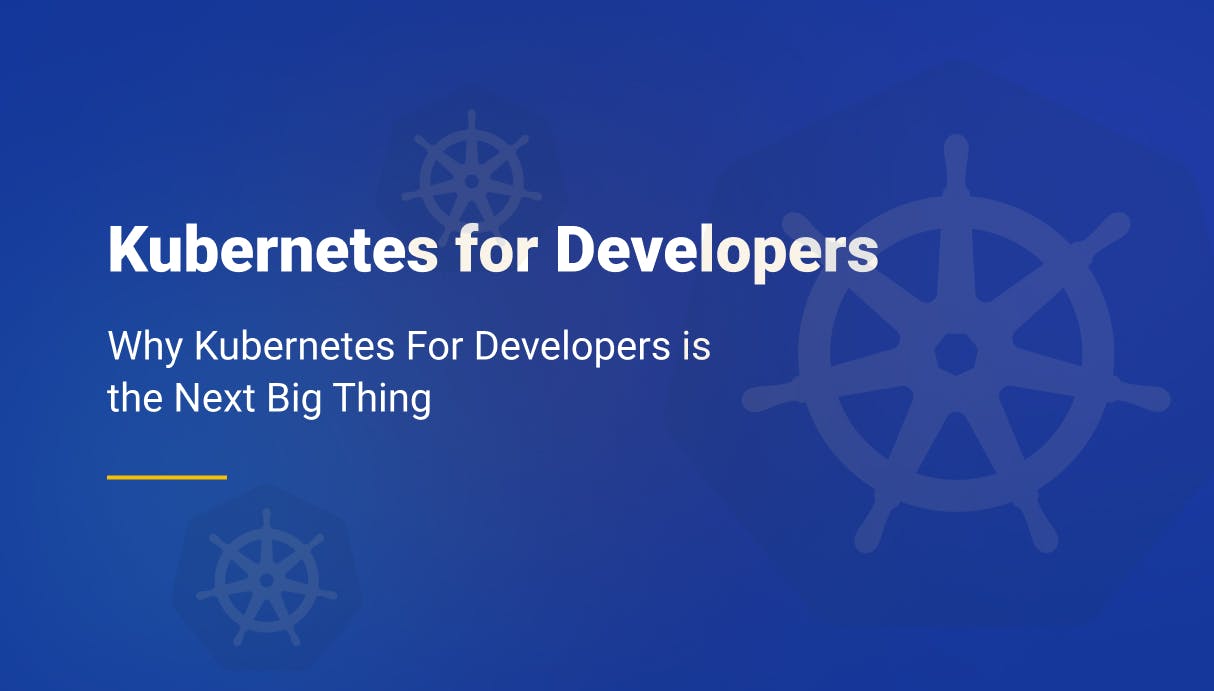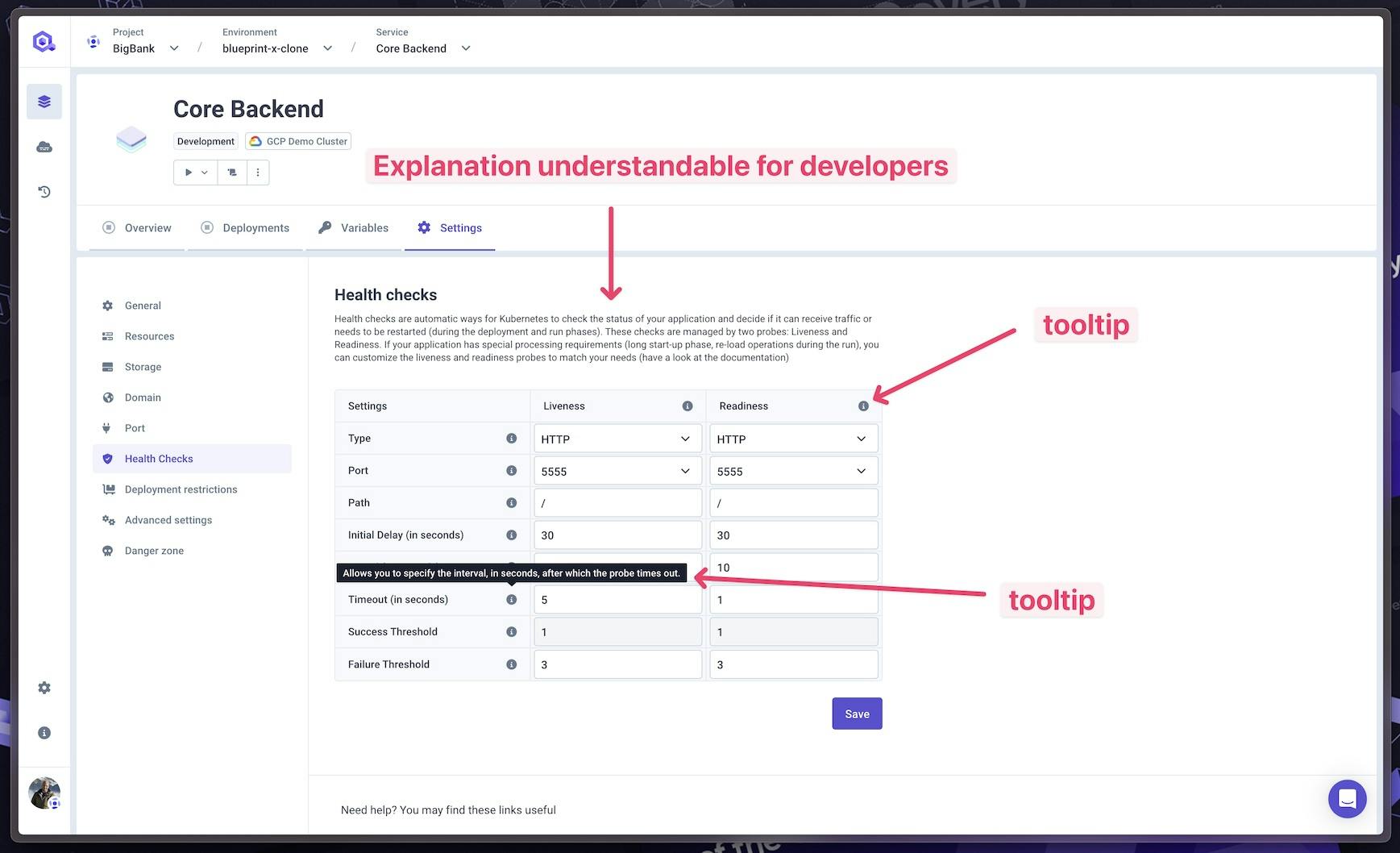Why Kubernetes For Developers is the Next Big Thing
Let's face it! Kubernetes is the standard for container orchestration, reshaping how we deploy and manage applications for the last 8 years - do you even remember when you run "docker run <your-image>" on an application server? 😁. However, it's crucial to recognize that Kubernetes was never initially designed with the everyday developer in mind. This article aims to explore this dichotomy and ultimately explain why Internal Developer Platforms, have become increasingly relevant in bridging this gap.

Romaric Philogène
January 15, 2024 · 6 min read
#Kubernetes: A Tool Built for Systems, Not for People
At its inception, Kubernetes was engineered to address the complexities of large-scale, containerized environments - a solution more suited to systems engineers than application developers. It excels in managing container lifecycles, scaling, and ensuring high availability. (Big thanks to the whole community and contributors 🙌). However, these are concerns typically beyond the direct scope of developers focused on writing and deploying code.
#Developers and Kubernetes
Despite its system-centric design, Kubernetes has become a de facto standard in container management. As organizations adopt microservices and containerized architectures, developers find themselves at an intersection where understanding Kubernetes is no longer optional. This shift isn't just a trend; it's a response to the needs of software delivery in a cloud-centric world.
However, the adoption of Kubernetes by developers is not without its challenges:
- Complex Concepts: Kubernetes introduces a set of concepts that are integral to its operation but are often foreign to a developer's typical workflow.
- The "kubectl" Barrier: The necessity to use kubectl imposes a steep learning curve, adding to the cognitive load of developers.
- Deployment Orchestration: The journey from code to deployment in Kubernetes is filled with additional steps that can be daunting and time-consuming for developers.
#Complex Concepts for Developers
At the heart of Kubernetes lies many concepts and terminologies – pods, deployments, services, stateful sets, and more. Diving into this world can be overwhelming for developers already juggling numerous responsibilities. It's not just about grasping a few new terms (they are used to); it's about understanding how these entities interact in the Kubernetes ecosystem.

Consider a simple scenario: deploying a basic web application. In a non-Kubernetes world, this might involve a straightforward script or a set of well-understood commands. In Kubernetes, however, it means understanding how a pod hosts your containers, how a deployment manages these pods, how services enable communication, and the role of stateful sets in managing stateful applications. Each of these elements is crucial and requires a significant investment of time and effort to master.
I know there are always exceptions - but most developers don't want or have the time to dig into those concepts. Please don't blame them! They already have a lot on their plate.
#The "kubectl" Barrier for Developers
Kubernetes predominantly interacts through kubectl, its command-line tool. While command-line proficiency is a common skill among developers, kubectl adds another layer to the learning curve. This tool requires not just familiarity with its commands but also a deep understanding of their context and the Kubernetes objects they manipulate.
The cognitive load for developers doesn't stop at learning new commands. It extends to understanding how these commands translate to actions within their Kubernetes environment. For instance, rolling out an update to an application isn't just a simple command; it involves understanding the deployment process, ensuring zero downtime, and managing configurations - all through kubectl.
I know that some developers enjoy learning using new tools - and a CLI like kubectl is not complex for them. But again, most developers don't (want and) have the time to learn one more tool. They already have so many things to do..
#Deployment Orchestration
One of the most significant barriers for developers in Kubernetes is its lack of a streamlined, self-service journey for simple code deployment. A developer's primary goal is to write code and see it in action. However, Kubernetes introduces multiple steps before an application goes live.
Firstly, there's the CI/CD pipeline, where code commits lead to automated builds and tests. Next, the built application needs to be containerized and pushed to a container registry. Then comes the Kubernetes-specific part – creating manifests to instruct Kubernetes on how to deploy and manage the application. Finally, developers must configure network access, often involving creating an ingress and a load balancer. Each step, while necessary, adds to the cognitive load and deviates from the core objective of a developer: to build and deploy efficiently.
We are far from the ideal Developer Experience 😅 But again, Kubernetes has not been built for developers. So let's see how we can fix this.
#Kubernetes for Developers
So, how can we fix Kubernetes for developers?
This is where Internal Developer Platforms (IDPs) come into play. Some Internal Developer Platforms (like Qovery) are designed to abstract the complexities of Kubernetes, offering a simplified interface and workflow that resonates more with the developer's way of working.
- Simplified Abstractions: IDPs provide higher-level abstractions over Kubernetes resources, making it more accessible and less intimidating for developers.
- Streamlined Workflows: They offer streamlined workflows for common tasks such as deployment, scaling, and managing microservices, aligning more closely with the developer’s primary focus.
- Empowering Developers: With IDPs, developers can leverage the power of Kubernetes without getting bogged down by its intricacies. This empowerment leads to greater autonomy and efficiency in deploying and managing applications.
Enjoy this example with Qovery
#Self-Service for Developers with Kubernetes
Providing a self-service experience to developers on Kubernetes can unlock many capabilities that you might not even think possible. Let me enumerate some benefits:
#1. Faster Innovation and Reduced Time-to-Market
Autonomy in deployment and management of applications allows developers to focus on what they do best: innovate. With the ability to self-serve, developers can quickly iterate, test, and deploy their applications without the bottlenecks of complex orchestration or dependency on other teams. This rapid cycle significantly reduces time-to-market, allowing businesses to respond more swiftly to market demands and opportunities.
#2. Enhanced Focus and Productivity
The abstraction of Kubernetes' complexities through IDPs enables developers to concentrate on their core work without the distraction of intricate deployment details. This enhanced focus leads to higher productivity, as developers spend less time messing with Kubernetes and more time writing and improving code. The cognitive load is significantly reduced, leading to better quality work and more creative solutions.
#3. Greater Control and Flexibility
Self-service in Kubernetes empowers developers with more control over their work environment. They can configure, deploy, and scale applications according to their project's specific needs without waiting for external assistance. This control also brings flexibility, allowing developers to experiment and make changes swiftly, fostering a culture of innovation and continuous improvement.
#4. Improved Collaboration and Ownership
When developers have the autonomy to manage their deployments, it fosters a sense of ownership and responsibility for the end product - yes, no more "I don't understand, it works on my machine" 😅. This ownership enhances the quality of the software, as developers are more invested in the performance and reliability of their applications. Furthermore, it improves collaboration between development and operations teams, as developers gain a better understanding of deployment processes, leading to more efficient and effective communication.
#5. Streamlined Learning and Skill Development
While Kubernetes may initially seem daunting, the self-service experience offered by IDPs allows developers to gradually familiarize themselves with its workings in a more manageable way. This streamlined learning process enables developers to build their skills in container orchestration and cloud-native technologies, crucial in today’s technology landscape.
#Abstraction ≠ Not Understanding
I firmly believe that abstraction doesn't equate to ignorance of the underlying processes. While it's true that developers may not always need to delve into the minutiae of what's happening behind the scenes, I am convinced that educating them about these underlying mechanisms at opportune moments can significantly enhance their proficiency in their daily tasks. This understanding, even if seemingly unrelated, can provide valuable context that enriches their overall skill set and decision-making capabilities.

#Wrapping up
Kubernetes is an integral part of the modern tech stack, but it's essential to acknowledge that it was not built with the typical developer's workflow in mind. The emergence of Internal Developer Platforms built on top of Kubernetes signifies an important evolution – one that recognizes the need to make powerful technologies like Kubernetes more accessible and developer-friendly.
It's not just about using the latest technologies; it's about making them work for the people who use them. By bridging the gap between complex systems and developer-centric workflows, we can create a more efficient, productive, and enjoyable software development environment.
Kubernetes for Developers is necessary!
Your Favorite Internal Developer Platform
Qovery is an Internal Developer Platform Helping 50.000+ Developers and Platform Engineers To Ship Faster.
Try it out now!

Your Favorite Internal Developer Platform
Qovery is an Internal Developer Platform Helping 50.000+ Developers and Platform Engineers To Ship Faster.
Try it out now!